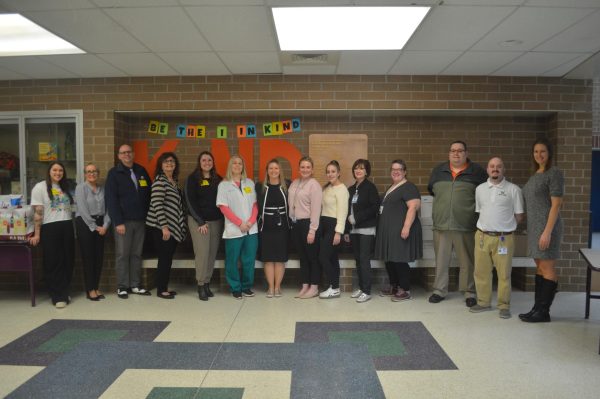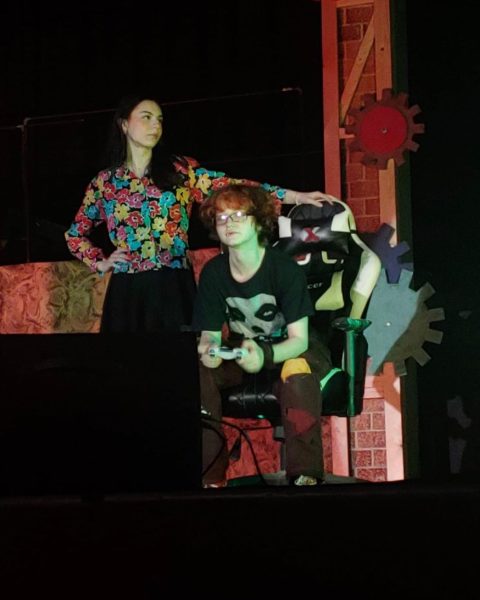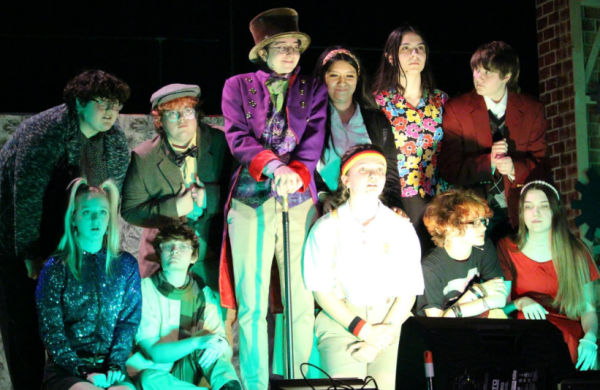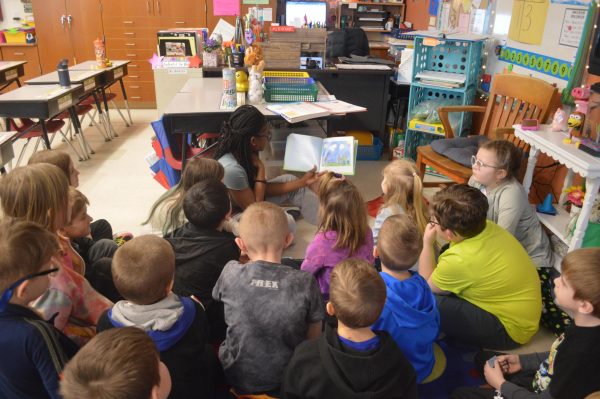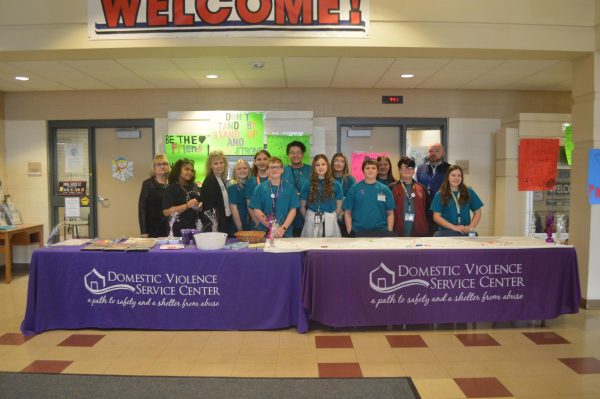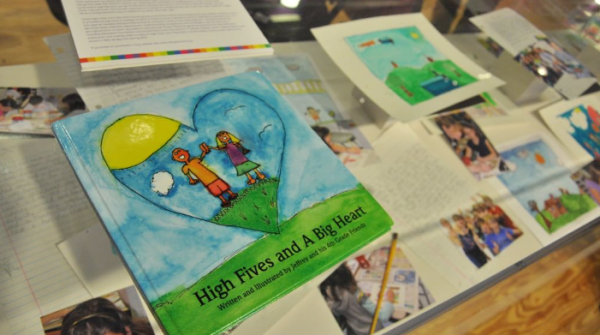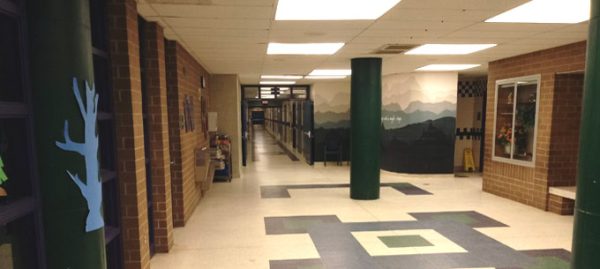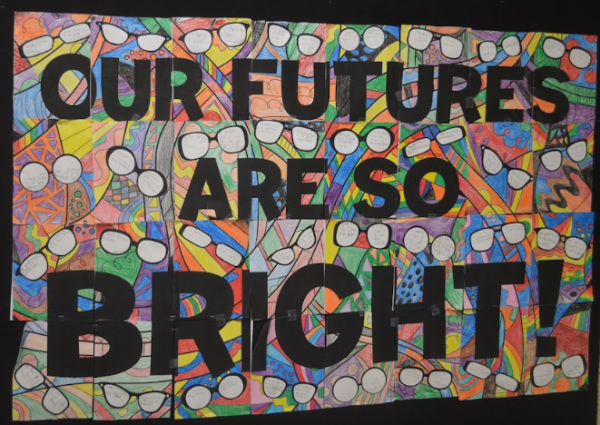Dear students, teaching has been hard, too.
Frustration works both ways in the world of online-learning.
GNA CAMPUS- Whether your school district decided to follow hybrid or virtual instruction, both teachers and students felt the new pressures of balancing the workload.
Due to the pandemic, the American education system was forced to evolve and push individuals into quick-thinking machines. Educators converted their worksheets into .doc files and uploaded their textbooks as PDFs. Their screen time increased along with their students and checking emails felt like opening the flood gate of endless questions. Their Google Meet calls went unanswered and there was less participation in their classes. They performed at their best all while balancing an early bird routine.
With the positives and negatives of teaching remotely, each individual experienced the same changes. Here is what two teachers of GNA had to say about their experience teaching remotely.
Ms. Hyder has been teaching at GNA for 17 years and for the past 4, she has taught the elective class of Public Speaking alongside her main class, junior English.
At the beginning of this school year, while GNA was on a hybrid schedule, teachers both taught classes in person and taught virtual classes by uploading lessons online. Hyder called this period, “the hardest time I’ve ever had as a teacher” because of the limited amount of time she had to plan and post assignments during the seven-period workday.
Since switching to a full virtual model, Hyder told us that she has been enjoying her teaching, to an extent. “I can really get more one-on-one with assistance than I can in a regular classroom setting”, she says.
Through private messages, she has had open conversations with some of her students who have expressed dissatisfaction with the work. To assist these students, she significantly shortened the length of her lessons and granted a grace period to submit late work.

However, she tells us, “I’ll go through and ‘red x’ anything that’s TOO late to be made up in all of my classrooms.” While this flexibility benefits the student, it ultimately increases the workload for her. “I’m not used to allowing them that freedom, but I think that’s a good thing.”
When transitioning to virtual, Hyder noticed that not all of her lessons could translate onto the world wide web. She was forced to recreate assignments to be more web-friendly. She says, “My previous years never had to be adapted to fit an online format, so I’ve basically started over again.” Specifically, she had to remove a segment from her daily warm-ups called, Facebook Fixes, where students had to spot and correct grammar from humorous Facebook posts.
For her Public Speaking class, students give speeches on various topics to overcome the anxiety of speaking in front of crowds. An obvious aspect of teaching public speaking is, well, the public part. Because students can not meet in groups to give their speeches, Hyder had to change how her class worked. She tells us, “The hard part is they’re not here in front of me to do speeches, so I’ve had to allow them to film; that’s not a huge deal, but it’s not as raw as doing it live.”
When asked what she misses the most from in-person teaching, she told us about the interactions. “I feel like I haven’t really made bonds with many of [my students] yet, and it’s hard for me to teach like that”, she tells us.
“A big obstacle is trying to reach kids who aren’t signing on and losing a lot of students to really crappy schedules!”
Mrs. Kelchner, another GNA educator, teaches Spanish level 1 through 4 and occasionally level 5, which is an advanced independent course. “I began my teaching career at a two-way bilingual public school in Boston where I taught all subjects in both Spanish and English to sixth-graders for 5 years before moving back to Pennsylvania,” she tells us while explaining her teaching background.
Along with a cup of coffee and breakfast, she begins each day early with the sunrise. Kelchner’s workday starts at 6:50 am and she logs onto her computer to post her assignments. She utilizes many of Google’s educational tools including Google Classroom, Google Forms, and Google Drive. She creates screen recorded videos and audios that accompany her lessons. While school ends for students at 2, she clocks off around 3 pm.

During the switch from in-person classes to full virtual, Mrs. Kelchner’s lessons translated easily onto the web and she faced only minor complications. This is because she already used Google Classroom for her classes and she used many educational online sources for her assignments. As a current student of her Spanish IV class, I have completed and enjoyed the many educational games she uses such as Kahoot, Quizlet, and Gimkit. “I don’t think that the online format is harder in terms of lesson planning,” she says.
Kelchner will regularly post feedback forms to collect opinions to understand how students are processing the workload. Some changes that have been implicated because of this feedback include more game-assignments, moving deadlines for weekly assignments to Sunday at midnight, and for the assignments to be posted daily instead of all at once at the beginning of the week on Monday. Although she has been mindful of her students’ feelings, she has noticed they continue to not engage or communicate in her classes.
Kelchner dedicates a few hours of her packed schedule to offer optional Google Meet calls to discuss problems students are having with completing work and to go over assignment answers. However, these calls have been sparse in attendance and she has witnessed a decrease in participation. “I have my first Google Meet at 11 am for Spanish I, at 12 pm for Spanish II, and at 2 pm for Spanish IV. I used to offer a Google Meet at 1 pm for Spanish III, but no one was coming to them, so now I offer them by request for Spanish III.”
Just like Ms. Hyder, Mrs. Kelchner is challenged and saddened by this lack of engagement from her students. It does not help that Mrs. Kelchner dearly misses getting to see and talk to each of her students every day. She tells us, “The level of frustration and feeling of helplessness that I experience on a daily basis are the biggest obstacles – I am at a loss for how to help so many who are struggling.”
Although students are struggling with the obstacles of online learning too, it is important to have empathy and listen to the experiences of both sides. While gathering information from these interviews, I could obviously pick out the similar challenges these teachers are facing.
- Reaching out to students who are not completing their work.
- Seeing that their students are not engaging in class like they used to.
- Changing aspects of their lesson to be more web-friendly.
- Constantly having to check their emails and messages.
- Giving students more freedom and being flexible with their circumstances.
Ms. Hyder reminds students, “Teachers miss you! (And stop turning in blanks!)” Mrs. Kelchner adds encouragement by saying, “Everyone is struggling right now. Reaching out for help is not a sign of weakness. We need one another to get through this. Please seek help from your friends, your family, and your teachers when you need it.”

My name is Sophia Tattersall, and I am a senior at Greater Nanticoke Highschool. This is my first year writing for The GNA Insider. I have lived in a dozen...






